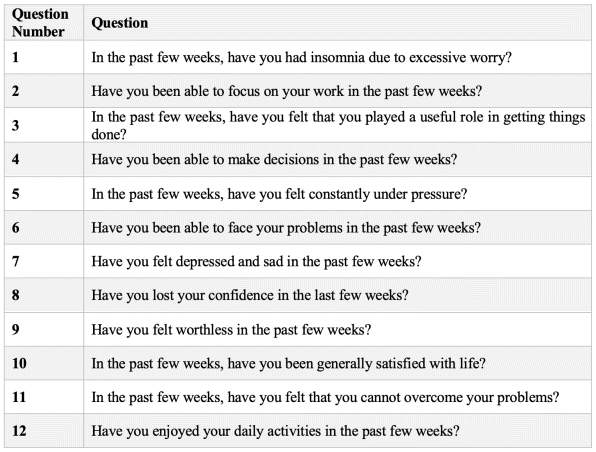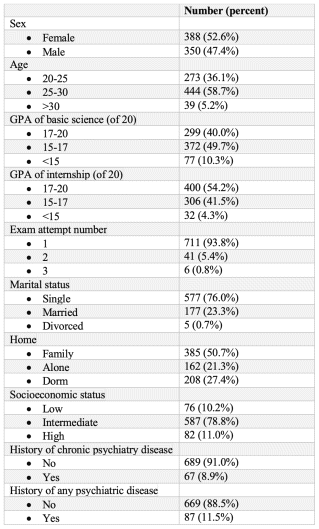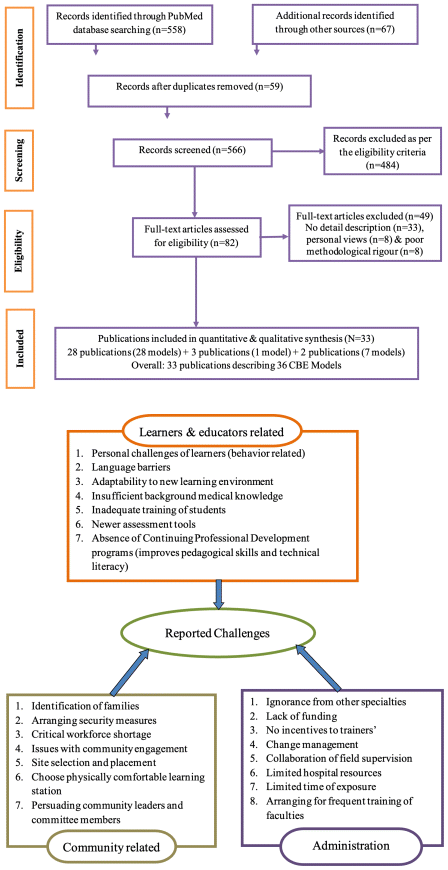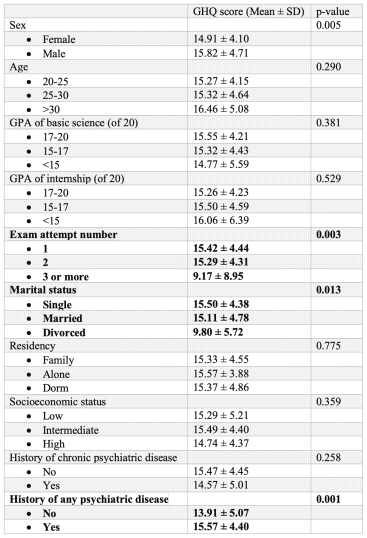
Babak Sabet 1, Sina Ahmadi 2, Reyhane Tirkan 3, and Ali Kheradmand 4
1Department of Surgery, Faculty of Medicine, Shahid Beheshti University of Medical Sciences, Tehran, Iran
2Student Research Committee, Faculty of Medicine, Shahid Beheshti University of Medical Sciences, Tehran, Iran
3Faculty of Medicine, Iran University of Medical Sciences, Tehran, Iran
4Department of Psychiatry, School of Medicine, Shahid Beheshti University of Medical Sciences, Tehran, Iran.
ABSTRACT
Background and aim: The pathway to obtaining a medical degree is a demanding journey, often inducing considerable stress, particularly for students nearing graduation. Understanding the mental health status of these medical students is crucial for implementing effective interventions to support their well-being. This study aimed to investigate the mental health status of medical students on the verge of graduation across Iran, using the General Health Questionnaire (GHQ). Methods: A cross-sectional study was conducted involving 766 eligible medical students. Data on demographics, academic performance, marital status, housing arrangements, socioeconomic status, and health history were collected. The GHQ questionnaire was employed to evaluate the mental health status of the participants. Descriptive statistics, t-tests, and one-way ANOVA were used for data analysis. Results: The study revealed a slight deviation in mental health among female participants (52.6%) and a predominance of individuals aged 25–30 (58.7%). The overall mean GHQ-12 score was 15.36 (SD = 4.49), indicating moderate psychological distress. Academic performance was not significantly related to mental health outcomes. However, a significant correlation was identified between the number of clinical competency test attempts and mental health status. Gender and marital status were significant determinants, with males (15.82 ± 4.71) and single individuals (15.50 ± 4.38) exhibiting higher mean GHQ scores compared to their married counterparts. Socioeconomic status and a history of chronic psychiatric illness were not statistically significant, but merit further investigation. Additionally, participants with more clinical competency test attempts demonstrated better mental health. Conclusion: Graduating medical students exhibit varying levels of mental health, influenced by factors such as gender, marital status, and exam attempts. Targeted interventions addressing their socio-emotional needs are essential to enhance psychological well-being in this population.
Keywords: medical students; mental health; General Health Questionnaire; graduation; academic performance; marital status; socioeconomic status
Date submitted: 27-August-2024
Email: Ali kheradmand (dr.alikheradmand@yahoo.com)
This is an open access journal, and articles are distributed under the terms of the Creative Commons Attribution-Non Commercial-Share Alike 4.0 License, which allows others to remix, tweak, and build upon the work non-commercially, as long as appropriate credit is given and the new creations are licensed under the identical terms.
Citation: Sabet B, Ahmadi S, Tirkan R, and Kheradmand A. Mental health assessment of graduating Iranian medical students using the General Health Questionnaire. Educ Health 2024;37:318-325
Online access: www.educationforhealthjournal.org
DOI: 10.62694/efh.2024.171
Published by The Network: Towards Unity for Health
Obtaining a medical degree is undoubtedly a challenging journey characterized by rigorous academic requirements, intense clinical training, and constant pressure to excel in a field where excellence is essential.1 As medical students approach the culmination of their academic endeavors and prepare to transition into the professional arena, the mental health landscape among this group becomes increasingly pertinent for exploration and understanding.2 The years of medical education coincide with the peak years of youth, often marked by heightened stress, anxiety, and uncertainty about the future due to the demands of dedicated study and clinical practice. This period is thus critical for the mental well-being of medical students.3
The mental health of medical students has been extensively studied. With numerous reports indicating a higher prevalence of psychological distress in this population compared to the general public.1 However, many earlier studies may not fully capture the current landscape of mental health challenges among students. Recent evidence, including systematic reviews and meta-analyses, have provided a clearer understanding of these issues.
A systematic review and meta-analysis on the prevalence of depression among Iranian university students revealed a concerningly high rate, with approximately 33% of students experiencing depressive symptoms, indicating an upward trend over the past decades.4 The study highlighted the importance of mental health interventions to address these growing issues in higher education institutions.
Another meta-analysis by Jaafari et al.5 focused on the mental health status of Iranian university students using the GHQ-28, which is also used in this study. Their analysis emphasized that over a third of students experienced psychological distress, underscoring the pressing need for timely mental health assessments and interventions in the student population, particularly among medical students who face unique academic and professional pressures.
These recent findings confirm the urgency of addressing mental health issues in medical students, specifically at critical junctures like graduation. They also reinforce the relevance of our study, which seeks to further investigate the psychological well-being of medical students using similar assessment tools. Systematic reviews such as these provide a strong foundation for developing support systems to mitigate mental health challenges and improve the overall well-being of future healthcare professionals.
While both Zare et al.4 and Jaafari et al.5 provide valuable insights into the prevalence of mental health issues among Iranian university students, their studies cover the period from 1991 to 2015. In contrast, our study examines the mental health of medical students in the post-COVID era, a time marked by unprecedented challenges, including increased stress and disruption to academic life. This distinction highlights the relevance of our findings in the context of the pandemic’s lasting impact on students’ mental well-being.
Despite recognizing these issues, few studies have specifically targeted graduating medical students, who face unique stressors as they prepare to enter the workforce. These students are transitioning from structured academic environments to more autonomous professional roles, adding new layers of pressure and uncertainty.6 This study aims to address this gap by assessing the mental health status of graduating medical students in Iran, using the General Health Questionnaire (GHQ).
The purpose of this study is to identify key factors contributing to mental health challenges in this population and to propose actionable insights for educational institutions and policymakers. Addressing these mental health challenges is crucial for ensuring that medical graduates not only excel in their careers, but also maintain a high level of personal well-being, which ultimately translates into better patient care and professional satisfaction. Implementing interventions and support systems based on the findings of this study can help safeguard the mental health of future healthcare professionals, fostering a healthier and more resilient medical workforce.
This study focused on medical students about to graduate who participated in the clinical competence exam of 2023. A cross-sectional study design was employed to assess the mental health of medical students before graduation. Institutional review board approval was sought prior to data collection. Medical schools across the country were contacted to request participation, and final year students were invited to volunteer. Informed consent forms were distributed to interested students, emphasizing the confidentiality and anonymity of their responses. Participation was entirely voluntary, and students were assured that their decision to participate (or not) would not affect their academic standing.
To demonstrate that this is a nationwide study, we have included the number of participating medical colleges and their geographical distribution. The study encompassed a total of 766 graduating medical students from various institutions across Iran. For example, participants were drawn from colleges such as Shahid Beheshti University in Tehran, as well as institutions in regions like Shiraz, Isfahan, and Mashhad. This broad representation across multiple provinces supports the nationwide scope of our findings.
Participants were required to be over 18 years of age, in their final year of medical school, and to provide consent to participate in the study. All participants in the clinical competence exam were asked to complete the questionnaire. While we do not have exact percentages of students from each medical college, it is estimated that a substantial proportion of medical students participated in the exam. This estimation is challenging to quantify, as not all medical students from a specific entrance cohort take the exam. Consequently, precise participation rates cannot be provided. Participants who did not provide informed consent or had incomplete general information were excluded from the study.
Descriptive statistics, including means, standard deviations, frequencies, and percentages, were calculated to summarize demographic characteristics and GHQ scores. Inferential statistics, such as t-tests or analysis of variance (ANOVA), were used to compare GHQ scores across different demographic variables, such as gender, age, and geographic location. All statistical analyses were conducted using appropriate software, with a significance level set at p<0.05.
The General Health Questionnaire (GHQ) was used as the primary tool to assess mental health status. The GHQ is a validated instrument commonly used to screen for mental health disorders in various populations, including medical students. Depending on the preference of the participating medical schools, the questionnaire was administered electronically or on paper. Students were instructed to complete the GHQ independently and return it within a specified time frame. The questionnaire items are suggested in Table 1.
Table 1 General Health Questionnaire (GHQ) Items
The Persian version of the GHQ-12, previously validated in Iranian populations, was used to ensure participants could fully understand and accurately respond to the questions. The validity and reliability of this Persian version have been assessed in prior research.7
The purpose of the study and the participation procedures were clearly explained to all participants. Consent was obtained from all eligible participants. No additional charges were imposed on individuals, and no interventions contradicted the proper educational process of the students. All participant information remained completely confidential. The study was approved by the ethics committee of Shahid Beheshti University of Medical Sciences with code IR.SBMU.MSP. REC.1402.107.
Table 2 presents the demographic and general information of the study participants. The sample comprised 738 medical students, with a slight majority of females (52.6%) compared to males (47.4%). The predominant age group was 25–30 years (58.7%), followed by 20–25 years (36.1%), and those over 30 years constituted 5.2%. However, it is important to note that medical education in Iran typically begins at age 18, and students usually complete their studies around age 26. Consequently, the predominant age group of 25–30 years reflects the expected timeline for those nearing graduation. In terms of academic performance, 40.0% had a GPA of 17–20 in basic sciences, while 49.7% scored between 15–17, and 10.3% scored below 15. For internship GPA, 54.2% scored 17–20, 41.5% scored 15–17, and 4.3% scored below 15. Most participants (93.8%) had taken the clinical competence exam only once, while smaller proportions had taken it twice (5.4%) or three times (0.8%). Regarding marital status, the majority were single (76.0%), with 23.3% married and 0.7% divorced. Housing arrangements showed that 50.7% lived in their own homes, 21.3% in rented accommodations, and 27.4% in dormitories. Socioeconomic status was predominantly intermediate (78.8%), with 10.2% reporting low and 11.0% high status. Most participants had no history of chronic psychiatric disease (91.0%) or any psychiatric disease (88.5%), with 8.9% and 11.5% reporting such histories, respectively.
Table 2 General information of study participants

Figure 1 Boxplot for comparison of GHQ scores based on the number of attempts in the clinical competence exam (p-value = 0.003)
The overall score for this test was calculated using the Likert scale. Among the study participants, the average score was 15.36 out of a possible 36, with a standard deviation of 4.49. Notably, in this assessment, a higher score indicates a higher or lower GHQ score.
Table 3 presents the General Health Questionnaire (GHQ) scores among study participants, segmented by various demographic and academic factors. The GHQ scores are expressed as mean ± standard deviation (SD), along with corresponding p-values to indicate statistical significance.
Table 3 GHQ Scores by Demographic and Academic
The analysis reveals several notable differences. Gender was a significant factor, with males scoring higher (15.82 ± 4.71) compared to females (14.91 ± 4.10), suggesting a higher or lower GHQ score among male students (p=0.005). Age did not show a significant impact on GHQ scores, although those over 30 years had slightly higher scores (16.46 ± 5.08) compared to the 20–25 and 25–30 age groups. Academic performance, indicated by GPA in both basic sciences and internships, did not significantly affect GHQ scores. Interestingly, the number of exam attempts showed a significant relationship, with those taking the exam three times exhibiting much lower scores (9.17 ± 8.95) compared to those taking it once or twice (p=0.003).
Marital status also emerged as a significant factor, with single participants having higher GHQ scores (15.50 ± 4.38) compared to married (15.11 ± 4.78) and divorced participants (9.80 ± 5.72), indicating greater mental health challenges among single individuals (p=0.013). Housing arrangements and socioeconomic status did not significantly influence GHQ scores. Additionally, participants with a history of any psychiatric disorder had significantly higher GHQ scores (15.57 ± 4.40) compared to those without such a history (13.91 ± 5.07), highlighting the impact of psychiatric history on current mental health (p=0.001).
The results of our study indicate that graduating medical students exhibit varying levels of mental health, significantly influenced by factors such as gender, marital status, and exam attempts. Males reported higher GHQ scores compared to females, suggesting a higher or lower GHQ score. Single students exhibited worse mental health outcomes than their married or divorced counterparts. Additionally, those who participated in the clinical competence multiple times demonstrated better mental health scores. Other factors such as age, academic performance, housing arrangements, socioeconomic status, and history of chronic psychiatric diseases did not show significant correlations with GHQ scores. These findings highlight the multifaceted nature of mental health determinants among medical students nearing graduation.
The key findings of our study emphasize the importance of gender, marital status, and exam attempts as crucial determinants of mental health among graduating medical students. Males reporting higher GHQ scores than females may indicate that male students experience greater stress or are less likely to seek support, contributing to worse mental health outcomes. The higher distress levels among single students compared to their married or divorced peers suggest that lack of emotional and social support may exacerbate stress and anxiety. Interestingly, students who participated in the clinical competence exam multiple times showed better mental health scores, possibly indicating that repeated exposure to the exam environment reduces anxiety through increased familiarity and confidence. These results suggest a complex interplay between social support, coping mechanisms, and stress exposure, underscoring the need for targeted interventions that address these specific factors to improve the psychological well-being of medical students.
Comparing our study with previous research provides valuable insights into the mental health of medical students. Our study found significant correlations between factors such as gender, marital status, and exam attempts with mental health outcomes, whereas James' study, which used the GHQ-12 short form, did not find sufficient evidence to recommend its routine use as a screening tool. James' study also highlighted the importance of timing and contextual factors in GHQ administration, emphasizing the complexity of mental health assessment in educational settings8. Similarly, Farhangiz's study at Shiraz University using the GHQ-28 identified a high prevalence of mental health issues, aligning with our findings. However, our broader demographic scope identified additional determinants like exam attendance, underscoring the need for tailored interventions based on diverse educational contexts.9
Furthermore, our study contrasts with Uner's research, which included first- and third-year students from various disciplines and identified academic progress and negative life events as significant mental health predictors. While our study did not directly replicate these findings, it highlighted other significant correlates, reflecting the multifaceted nature of mental health determinants among medical students.10 Comparatively, Carson's study on first-year medical students at the University of Edinburgh reported lower psychological distress levels than our study of graduating students, indicating an increase in mental health issues as students progress in their medical education.2
While our study confirms previous findings that male medical students experience higher levels of psychological distress than their female counterparts, it also builds on recent systematic reviews indicating a broader trend of mental health challenges among university students, particularly post-COVID.4.5 The correlation between repeated attempts at the clinical competence exam and improved mental health outcomes highlights an important aspect not thoroughly explored in earlier studies. Additionally, the finding that single students reported higher GHQ-12 scores aligns with Jaafari et al. (2021), which also emphasized the significance of social support in mitigating anxiety and depression.5 In contrast, our study’s exploration of the impact of exam attempts frequency on mental health offers a new perspective on how experience with high-stakes assessments can alleviate anxiety, contrasting with findings from earlier research that did not address this factor.
These comparisons collectively emphasize the importance of considering various sociodemographic factors and educational stages when assessing and addressing mental health among medical students.
Despite the significant results, this study has several limitations. First, the cross-sectional design makes it difficult to establish causal relationships between variables. Additionally, reliance on self-reported data, particularly regarding mental health status and academic performance, introduces the potential for recall bias and social desirability bias. Moreover, the study sample, comprising graduating medical students nationwide, may not be representative of all medical student populations, which limits the generalizability of the findings. Finally, the study's focus on specific variables, such as marital status and academic performance, may overlook other potential determinants of mental health among medical students. Further research is needed to address these limitations and to explore additional factors that may influence the mental health of medical students.
In conclusion, our study highlights the diverse mental health challenges faced by graduating medical students, identifying significant determinants such as gender, marital status, and exam attempts frequency. Males and single students were found to have poorer mental health outcomes, while repeated exam attempts appeared to mitigate anxiety and stress. These findings underscore the importance of developing tailored support and intervention strategies that address the unique needs of different student demographics. By focusing on these key factors, educational institutions can better support the psychological well-being of medical students, ultimately contributing to their overall academic and professional success.
1. Jafari N, Loghmani A, Montazeri A. Mental health of medical students in different levels of training. International Journal of Preventive Medicine. 2012;3(Suppl1):S107. https://doi.org/10.1016/S0924-9338(12)75178-7
PubMed PMC
2. Carson AJ, Dias S, Johnston A, McLoughlin MA, O'Connor M, Robinson BL, et al. Mental health in medical students a case control study using the 60 item General Health Questionnaire. Scottish Medical Journal. 2000;45(4):115–6.https://doi.org/10.1177/003693300004500406
Crossref PubMed
3. Bíró É, Balajti I, Ádány R, Kósa K. Determinants of mental well-being in medical students. Social Psychiatry and Psychiatric Epidemiology. 2010;45:253–8.http://dx.doi.org/10.1007/s00127-009-0062-0
Crossref
4. Zare N, Parvareh M, Noori B, Namdari M. Mental health status of Iranian university students using the GHQ-28: a meta-analysis. Scientific Journal of Kurdistan University of Medical Sciences. 2016;21(4):1–16
5. Jaafari Z, Farhadi A, Amin Lari F, Mousavi FS, Moltafet H, Dashti E, et al. Prevalence of depression in Iranian college students: A systematic review and meta-analysis. Iranian Journal of Psychiatry and Behavioural Sciences. 2021;15(1):e101524.https://doi.org/10.5812/ijpbs.101524
Crossref
6. Nojomi M, Gharayee B. Medical students and mental health by SCL-90-R. Medical Journal of The Islamic Republic of Iran (MJIRI). 2007;21(2):71–8
7. Montazeri A, Harirchi AM, Shariati M, Garmaroudi G, Ebadi M, Fateh A. The 12-item General Health Questionnaire (GHQ-12): translation and validation study of the Iranian version. Health and Quality of Life Outcomes. 2003;1(1):66.https://doi.org/10.1186/1477-7525-1-66
Crossref PubMed PMC
8. James D, Yates J, Ferguson E. Can the 12-item General Health Questionnaire be used to identify medical students who might ‘struggle’ on the medical course? A prospective study on two cohorts. BMC Medical Education. 2013;13(1):48.https://doi.org/10.1186/1472-6920-13-48
Crossref
9. Farahangiz S, Mohebpour F, Salehi A. Assessment of mental health among Iranian medical students: a cross-sectional study. International Journal of Health Sciences. 2016;10(1):49.https://doi.org/10.12816/0031216
Crossref PubMed PMC
10. Üner S, Özcebe H, Telatar TG, Tezcan S. Assessment of mental health of university students with GHQ-12. Turkish Journal of Medical Sciences. 2008;38(5):437–46 DOI:10.1002/hsr2.1948
Crossref
© Education for Health.
Education for Health | Volume 37, No. 4, October-December 2024